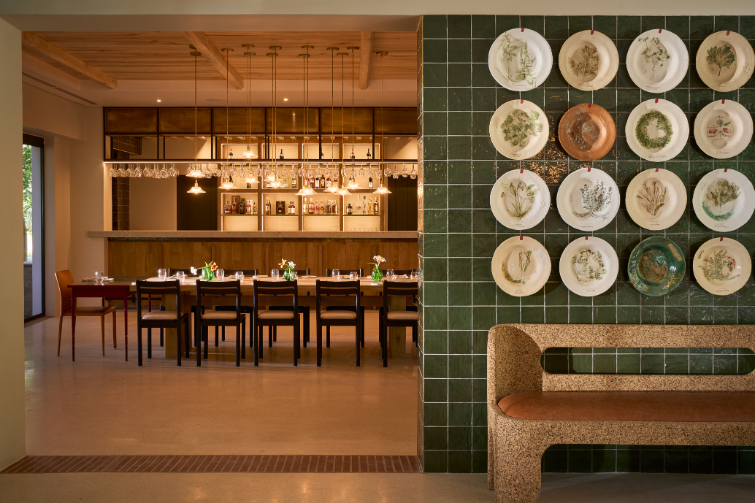South Africa has a long history of producing wine, and the excellent quality being produced has been receiving greater world recognition in recent years.
As wineries continue to improve their reputation and raise awareness of the quality of our wines, there’s been an emphasis on sustainable and ethical wine production, as well as increased investment in modernising wineries and vineyards.
But all the work, energy, love, and money, being invested in making great wines can go to waste if the wine tasting experience is sub-par. Specifically, the pleasure these wines can produce are undermined if they’re served at the wrong temperature, as sadly is often the case at wineries and restaurants that aren’t paying attention to this detail.

Michael Bampfield-Duggan, founding owner of Wine Concepts.
The correct temperature
“Wine’s enjoyment can be directly affected by the temperature it is served at,” says Mike Bampfield-Duggan, founding member and owner of Wine Concepts in Cape Town. “Unfortunately, in South Africa we often experience red wines being served too warm and white wines too cold. Correct serving temperature can enhance the experience and make wines taste even better.”
Guidelines for wine serving temperatures depend on the style of wine. As a rule, the following serving temperatures are recommended as best practice:
- Sparkling wine and Champagne: should be served cold, ideally between 5-8 °C.
- White wines: lighter style white wines, such as unwooded, dry, off-dry and semi-sweet are best served chilled, between 7-10 °C, while richer, fuller-bodied white wines like Chardonnay can be served around 10-12 °C.
- Rosé wines: should be served chilled, between 7-10 °C.
- Red wines: lighter-bodied red wines, such as Pinot Noir, Cinsault etc should be served slightly chilled, around 12-14 °C, while full-bodied red wines like Cabernet Sauvignon or Syrah should be around 16-17 °C.
Negative impacts
These temperatures may be tailored to taste, but generally a wine served too cold may hide the flavours and aromas, and if served too warm, will make the alcohol more pronounced.
Serving red wine at the wrong temperature will affect the taste and aroma, reducing its impact and enjoyability. “If the wine is served too warm, it will probably have an open, flabby alcoholic aroma and most probably taste coarse and astringent, lacking definition and character,” says Mike. “It can make the alcohol taste more pronounced, overpowering the important flavours in the wine.”
“However, if a red wine is served too cold, this can mute the flavours and aromas, making it difficult to appreciate the wine’s subtleties. Never overchill full-bodied red wines, as the tannins become more pronounced and harsher.” Rather than placing an unfinished bottle of red in the fridge, it’s better to keep it in a cool spot for later enjoyment.
Local conditions
The enjoyment of wine is a subjective experience, and what one person considers correct may not be the same for someone else.
Different cultures and regions may also have different preferences, and what is considered preferable in one country may not be the same in another. “We often hear of red wines being served at ‘room temperature’. This was often the case in European countries, but that may have changed now that most homes are centrally heated. Room temperature in our warm South African summers is certainly not recommended for our wines!”
Ultimately, the best approach is to experiment with different serving temperatures and find what works best for your personal taste preferences and the specific wine you’re drinking. But ignorance can spoil the whole experience.
Raising awareness
In some European countries, such as Spain, wines often come with an ideal serving temperature recommended on the label, which allows producers to ensure their wines are enjoyed as intended. This practice also empowers customers, who can make their host or waitron attentive to the recommended serving temperature.
But here in South Africa, that judgement is left to servers and individual establishments, who are not always aware of the impact that incorrect serving temperatures can have on the wine.
“There are various causes for such a lack of awareness, but in restaurants for instance it’s often the lack of training of the staff serving the wines. Another important issue is that the wines have not been stored correctly resulting in either the wines being served too cold or too warm.”
“Providing staff with adequate training can enhance the experience not only for the customer but for the waitron themselves, as it will give them more confidence when serving wine. There are several wonderful registered and recognised courses offered in South Africa, so there’s no excuse!”
A restaurant with a good wine storage system in place adds to the final experience for the customer. “Technology today offers the industry many efficient ways of storing wine including smart wine fridges and temperature sensors in cellars to ensure the wine is stored and served at the correct temperature,” says Mike.
Everyone’s responsibility
Everybody can contribute to educating and promoting servers on the correct service of wine. Whether it’s the wineries themselves, wine retailers, wine distributors or wine educators, anyone can do their part to educate servers on the optimal serving temperature for their specific wines.
At restaurants, it’s the responsibility of the owner or manager to have their wine servers trained to serve the wines on their list correctly. Professional sommeliers, who have extensive training and knowledge, are often found in high-end restaurants, but they can also offer their services to others to improve the service of wine more broadly.
There’s no lack of opportunities for training. “There are several recognised registered institutions who offer wine education in various forms and if it means starting by attending a basic wine course, it will certainly provide confidence when serving wine. Should the need arise, this can be followed up with further and more intense courses.”
We can do better
Industry organisations are working hard to expand export markets, which includes participating in international wine competitions and events as well as hosting wine tastings and seminars to educate consumers and wine professionals about the quality and diversity of their products.
At the same time, local and overseas wine critics and enthusiasts are increasingly recognising the unique characteristics and high quality of South African wines. There’s no doubt that South Africa is becoming a major player in the global wine industry and building its reputation as a serious wine producing country.
Education on proper wine serving temperatures therefore isn’t only important for South African establishments who want to draw discerning visitors, but also for guaranteeing the offering and reputation of our wine industry as a whole.
It would be shame if our top wines end up tripping over their feet at the finish line.













